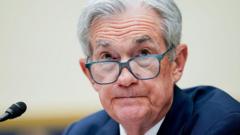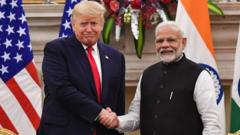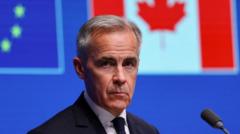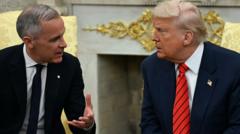Amidst aggressive tariff implementations and rising government debt, the U.S. dollar has faced significant decline, leading to discussions about the implications for America's role in the global financial system.
The Dwindling Dollar: Analyzing America's Financial Position

The Dwindling Dollar: Analyzing America's Financial Position
The downward trend of the U.S. dollar raises questions about economic policies and global standing.
As of July 1, 2025, the U.S. dollar has been on a troubling decline, plunging over 10 percent in value in the past six months against the currencies of major global partners. This slump marks the worst start to a year for the dollar since 1973, reflecting deepening concerns about America’s financial health and the effectiveness of its economic policies.
Factors contributing to this decline include aggressive tariff strategies proposed by President Trump, a shift towards more isolationist foreign policy, rising inflation, and increasing government debt, all of which have diminished global confidence in the U.S. as the leading nation in the international financial framework. Despite a recovery in U.S. stock and bond markets, the dollar's value continues to drop, prompting experts like Steve Englander to explain that the core issue is not just the strong or weak nature of the dollar itself, but rather the message it conveys about U.S. policymaking.
In trade, the following weeks are crucial. President Trump announced the imposition of tariffs on July 9, prompting international entities, including Canada, to swiftly eliminate internal trade barriers as a reaction; however, economists argue this approach is inadequate to compensate for reduced U.S. trade. Alongside these changes, U.S. and E.U. negotiators are engaged in intensive discussions, with hopes of finalizing a trade agreement by the looming deadline—but expectations remain tempered, and a comprehensive deal may remain elusive.
Meanwhile, in stark contrast, China continues to surge ahead in transitioning towards cleaner energy sources, despite leading in climate emissions overall. This shift underlines the varying global responses to environmental challenges and economic strategies, raising questions about how nations will jockey for position in the future energy landscape.
As the situation evolves, the interconnectedness of the dollar's performance, tariff policies, and international relations continues to shape the economic narrative for the United States and its place on the world stage. As negotiations unfold and policies are implemented, the implications of the dollar's value will resonate beyond borders, influencing markets and policies across the globe.





















